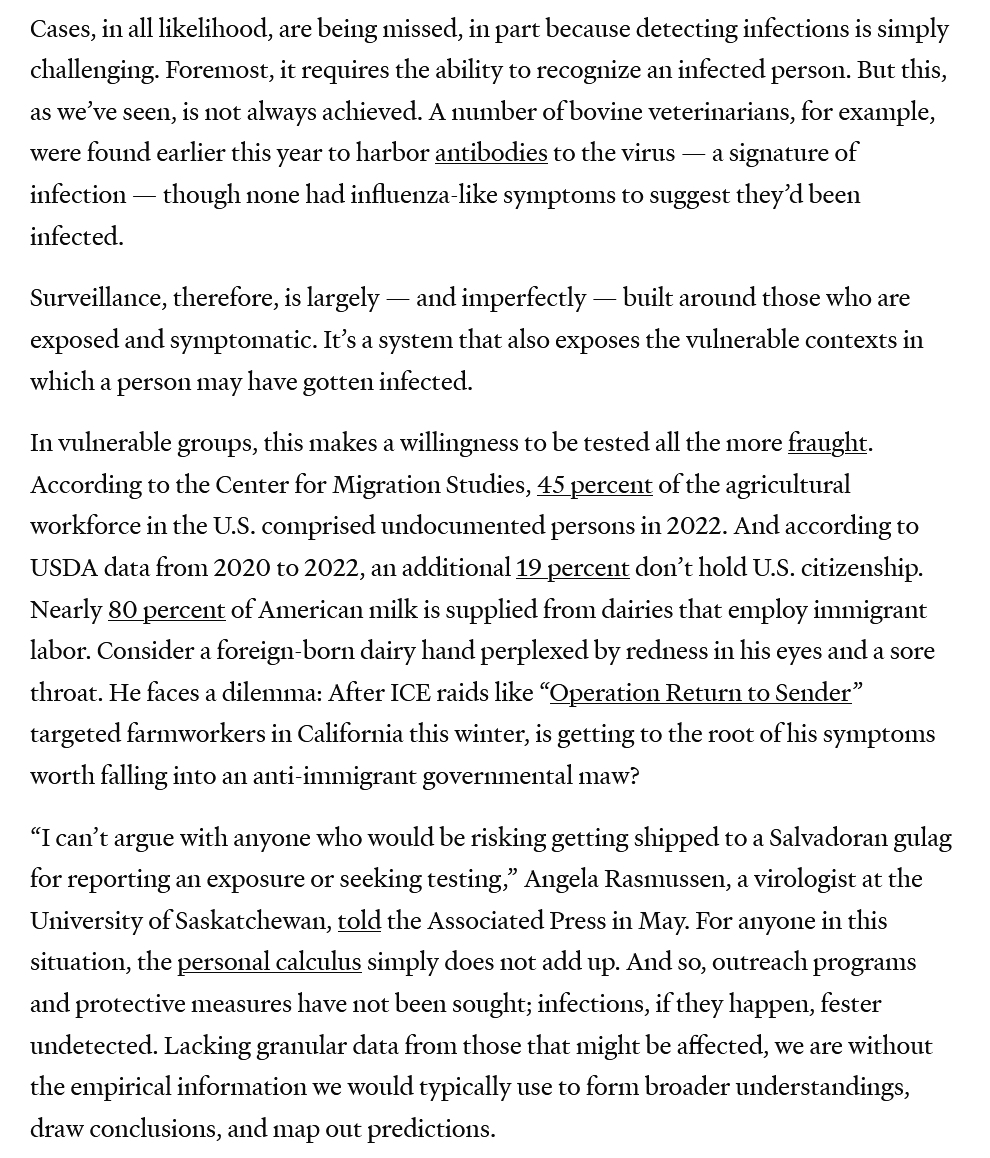Screenshot reading: Cases, in all likelihood, are being missed, in part because detecting infections is simply challenging. Foremost, it requires the ability to recognize an infected person. But this, as we’ve seen, is not always achieved. A number of bovine veterinarians, for example, were found earlier this year to harbor antibodies to the virus — a signature of infection — though none had influenza-like symptoms to suggest they’d been infected.
Surveillance, therefore, is largely — and imperfectly — built around those who are exposed and symptomatic. It’s a system that also exposes the vulnerable contexts in which a person may have gotten infected.
In vulnerable groups, this makes a willingness to be tested all the more fraught. According to the Center for Migration Studies, 45 percent of the agricultural workforce in the U.S. comprised undocumented persons in 2022. And according to USDA data from 2020 to 2022, an additional 19 percent don’t hold U.S. citizenship. Nearly 80 percent of American milk is supplied from dairies that employ immigrant labor. Consider a foreign-born dairy hand perplexed by redness in his eyes and a sore throat. He faces a dilemma: After ICE raids like “Operation Return to Sender” targeted farmworkers in California this winter, is getting to the root of his symptoms worth falling into an anti-immigrant governmental maw?
“I can’t argue with anyone who would be risking getting shipped to a Salvadoran gulag for reporting an exposure or seeking ..."
